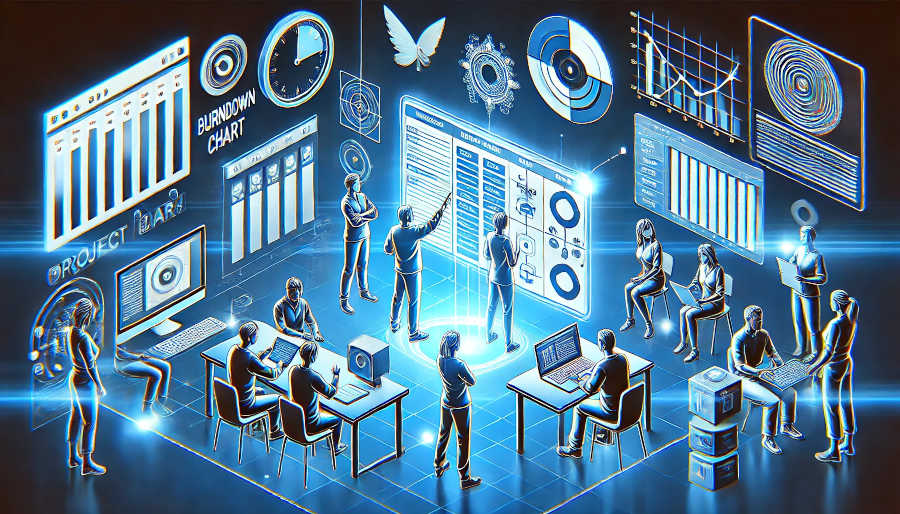Lack of Agility and Adaptability
One of the most prominent challenges of traditional development methods is the lack of agility and adaptability. Traditional approaches often follow a rigid, sequential process, such as the waterfall model, where each phase is completed before moving on to the next. This linear structure leaves little room for changes or adjustments during the development cycle. In today's dynamic environment, where market demands can shift rapidly, customer needs evolve, and new technologies emerge constantly, this inflexibility can be a major hindrance.
For instance, in a software development project using the waterfall model, if a new requirement arises during the testing phase, it can be extremely difficult and costly to go back and make changes to the design or coding. The entire process may need to be restarted from a certain point, leading to delays, increased costs, and potential dissatisfaction among stakeholders. This lack of agility not only affects the ability to respond to external changes but also limits the innovation potential within the development team. Teams are often bound by the predefined process and may not have the freedom to explore new ideas or approaches that could lead to better products.
Moreover, traditional development methods typically involve long planning cycles at the beginning of a project. These plans are based on assumptions about the market, customer needs, and technological capabilities at that time. However, as time passes, these assumptions may prove to be inaccurate. The long lead times between planning and implementation mean that by the time the product is finally launched, it may no longer meet the actual market demands. This lack of adaptability can result in products that are obsolete or fail to gain traction in the market, causing significant losses for the company.
Poor Communication and Collaboration
Another major challenge of traditional development methods is the issue of poor communication and collaboration. In traditional setups, different teams or departments involved in the development process often work in silos. For example, in a product development project, the design team may work independently from the engineering team, and the marketing team may not be actively involved until the later stages of the project. This isolation can lead to a breakdown in communication and a lack of shared understanding among the teams.

When teams work in isolation, there is a high risk of misunderstandings and misalignments. The design team may create a product design that is not feasible from an engineering perspective, or the engineering team may build a product that does not meet the marketing requirements. This can result in rework, delays, and increased costs. Additionally, the lack of communication can prevent the early identification of potential issues or risks, as teams may not be aware of problems occurring in other parts of the development process.
Furthermore, traditional development methods often rely on formal, hierarchical communication channels. This can slow down the flow of information and make it difficult for team members at different levels to share ideas and feedback. In a hierarchical structure, junior team members may be hesitant to voice their opinions or concerns, fearing that they may not be well-received. This can stifle innovation and prevent the team from benefiting from the diverse perspectives of all its members. Effective communication and collaboration are essential for successful development, and the limitations of traditional methods in this area can have a significant impact on the quality and timeliness of the final product.
Inefficient Resource Allocation
Inefficient resource allocation is also a significant challenge for traditional development methods. Traditional approaches often rely on upfront estimates of resources, such as time, budget, and personnel. These estimates are based on historical data and assumptions about the project scope and complexity. However, in many cases, these estimates turn out to be inaccurate, leading to either over-allocation or under-allocation of resources.
Over-allocation of resources can result in waste and inefficiency. For example, if a project is allocated more time and budget than necessary, the development team may not be motivated to work efficiently. There may be a tendency to stretch out the project timeline or use more resources than required, leading to increased costs without adding corresponding value. On the other hand, under-allocation of resources can lead to rushed work, poor quality, and missed deadlines. If a project does not have enough personnel or budget, the team may be unable to complete all the necessary tasks or may cut corners to meet the schedule, resulting in a subpar product.
In addition, traditional development methods often do not have a flexible mechanism for reallocating resources during the project. Once the initial resource allocation plan is set, it is difficult to make adjustments based on changing circumstances. For example, if a particular task takes longer than expected or a new requirement emerges, there may not be a straightforward way to reallocate resources from other areas of the project. This lack of flexibility can further exacerbate the problem of inefficient resource allocation and have a negative impact on the project's success.
In conclusion, traditional development methods face several major challenges in today's business environment. The lack of agility and adaptability, poor communication and collaboration, and inefficient resource allocation can all hinder the development process and lead to suboptimal outcomes. To overcome these challenges, organizations need to consider adopting more modern and flexible development approaches, such as agile development methodologies. Agile methods emphasize flexibility, collaboration, and continuous improvement, enabling teams to respond quickly to changes, communicate effectively, and allocate resources more efficiently. By embracing these new approaches, companies can enhance their competitiveness and deliver products and services that better meet the needs of the market. However, implementing these changes requires a shift in mindset and culture within the organization, as well as the right training and support for the development teams. With the right strategies in place, organizations can successfully navigate the challenges of traditional development methods and achieve greater success in their development endeavors.
ARTICLE TITLE :Three major challenges of traditional development methods ,AUTHOR :ITpmlib

















